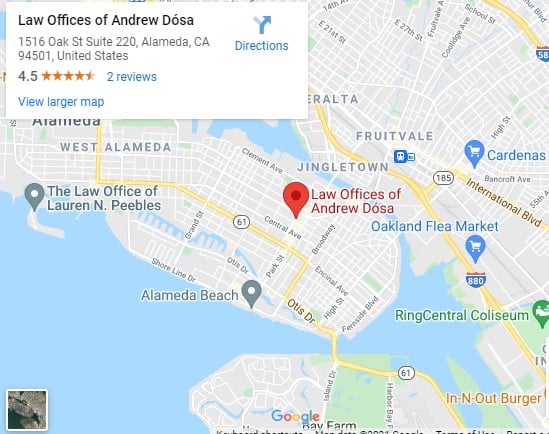The Miranda Rule/Warning
We continue our series on Motions to Suppress, and look particularly at the general requirements of the Miranda case and how it applies to a case where there are statements taken from the defendant.
In general, Miranda Warnings are taken after the defendant is in custody, or, practically, not really free to leave the scene and the conversation with police. You have to remember that police will always say they simply want to talk with people, to get their side of the story or simply get information so they can decide what to do next.
The reality is often the opposite. The police typically make up their minds to arrest, but pretend they are making an inquiry–what happened? We want to know. We want to hear your side of the story. We want you to have the chance to tell us there was no crime involved. But they aren’t always truthful. Police hear the first side of a story, from the “victim,” and know they will arrest the suspect.
It is not my intention to minimize or negate the significant and very real problem of domestic violence in our society, but if there is any doubt about what happened, and even if there is evidence of mutual combat, the man will get arrested.
The back of my business card has the Miranda Warning, based on Supreme Court’s ruling in Miranda v. Arizona, 384 US 436 (1966):
You have the right to remain silent.
Anything you say can and will be used against you in a Court of Law.
You have the right to talk to a Lawyer. One will be appointed to represent you before any
questioning, if you wish.
You can decide at any time to exercise these rights and not answer any questions or make
any Statement.
I conclude the warming with this statement: Exercise Your Rights. Call Me.
Now, we continue on our journey.
THE TEST EMPLOYED IS AN OBJECTIVE STANDARD, NOT A SUBJECTIVE
STANDARD; THE IMPLICATION OF THE MIRANDA RULE
Because the test at a suppression motion is the objective standard, and not a subjective standard, the Officer’s state of mind is not relevant, so when the DDA [Deputy District Attorney] claims, “it is not being offered for the ‘truth’ but to show the Officer’s state of mind”, it will then be apparent that the DDA is conceding that it is not relevant either.
Since the passage of Proposition 64 by voters in 2016, it has been legal for persons 21 years of age and older to possess and transport small amounts (up to 28.5 grams) of marijuana. (Health & Saf. Code,1 § 11362.1, subd. (a)(1).)
The Court of Appeal, First District, Division Two, People v Hall, filed 11/04/2020 (No. A157868), joins courts that have held the lawful possession of marijuana in a vehicle does not provide probable cause to search the vehicle. See
People v. Lee (2019) 40 Cal.App.5th 853, 865–867 (Lee); People v. Shumake (2019) 45 Cal.App.5th Supp. 1, 6 (“Shumake”); People v. Johnson (2020) 50 Cal.App.5th 620, 634 (“Johnson”); People v. McGee (2020) 53 Cal.App.5th 796, 801–802 (“McGee”).
Mr. Smith also contends that when the officer first arrived and made the initial contact with Defendant, the officer had formed the intent to place him under arrest. Therefore, Mr. Smith was ‘in custody’ under the facts of this particular case at that initial contact. The officer ‘interrogated’ the Defendant, at the start, and this was done in violation of Miranda.
Under Miranda, the prosecution may not use statements stemming from custodial interrogation unless it demonstrates the use of procedural safeguards effective to secure the privilege against self-incrimination. People v Taylor (1986) 178 Cal. App. 3rd 217. The defendant is entitled to suppression of those statements if the prosecution fails to carry its burden at a suppression hearing. The defendant objects to the admission in this trial of any and all evidence related to his admissions supposedly made after he was seized but prior to being advised of his
Miranda rights.
An interrogation is either express questioning or its functional equivalent that is reasonably likely to elicit an incriminating response. Id.; See also People v. Underwood (1986) 181 Cal.App.3rd 1223, 1231.
A person is in custody when he is “deprived of [his/her] freedom of action in any significant way, or is led to believe, as a reasonable person, that he is so deprived.” People v. Arnold, (1967) 66 Cal.2nd 438, 448.
Mr. Smith, here, assuredly was in custody, prior to the commencement of questioning; one would not feel able to flee from policemen exiting their cars, two SUVs hedging his car from driving off, who was conducting traffic or other investigation under these specific circumstances and would never feel free to leave the scene with a police officer grilling him.
The courts have laid out several factors to be considered on the question of Miranda custody. These include:
- the focus of the investigation, type of questioning,
- whether freedom of movement is deprived,
- whether the focus of the investigation is communicated to the detainee,
- how would the reasonable person in the suspect’s position have understood his situation,
- did the police communicate to the suspect that she was being investigated?
See People v. Lopez (1985) 163 Cal.App.3d 602, 605-608. No clear thinking, rational, legal mind would think the defendant here was free to leave in this setting. (Valium) As has been authoritatively noted, “The ultimate ‘in custody’ determination for Miranda purposes [involves] [t]wo discrete inquiries [including]: (1) would a reasonable person have felt he or she was not at liberty to terminate the interrogation and leave.” Thompson v. Keohane (1995) 516 U.S. 99, 112. I have a suspension bridge for sale in the Hills outside of Palmdale for anyone who believes that the defendant here, or anyone, could reasonably have felt that he was free to cut off questioning and leave the officer from the point at which the officers approached his car.
Therefore, they can never presume to go on their way from even what might be perceived as a “traffic stop.” It may have been only a “traffic stop”, but the time of this sort of custodial stop dictated or triggered the rights to the Miranda advisement. The police were required to give the Miranda advisement at the start of the detention. Berkemer, supra at 440.
The standard by which the court must judge the admissibility of pre-Miranda admissions is set forth in the U.S. Supreme Court case of Pennsylvania v. Muniz (1990) 496 U.S. 582. In that case, the arresting officer asked the defendant during his “initial” investigation and “prior” to any Miranda rights being read to the Defendant, questions the court felt were not necessary for booking and of possible incriminating nature. The Supreme Court held the officer had a right to “secure the biographical data necessary to complete the booking.”
The court, however, further concluded that the defendant’s admissions to non-routine booking questions are incriminating not only because of the manner in which they are delivered but also because of the content. These included statements made during FSTs performed at the police station. Therefore, the admissions to those sorts of questions should be suppressed.
Of course, if those admissions are suppressed [as they must be], then the post-Miranda statements must also be such because the initial violation taints the later grilling. See Missouri v. Seibert (2004) 542 U.S. 600, 616-617.
2. CONSTITUTIONAL AND STATUTORY GROUNDS.
This motion is based on a violation of Mr. Smith’s rights as guaranteed by the Fourth, Fifth, and Fourteenth Amendments to the United States Constitution, and Article I, §§ 1, 10, and 13, of the California Constitution.
3. STANDING
Mr. Smith has the standing to suppress the evidence as requested herein in that the complaint of search and seizure violated his own Fourth Amendment rights under the United States Constitution (See, Mintz, David, and Locke, William, Chapter 20 – Search and Seizure Motions, in California Criminal Law Procedure and Practice, 5th ed. (Berkeley, CA: C.E.B. 2000) § 20.12).
4. THEORY OF FOURTH AMENDMENT VIOLATION(S).
This statement of grounds and evidence is not intended to be exclusive and is based upon such discovery as was available on this date. Though the defendant has received some discovery herein, the defendant has no way of knowing the entire body of evidence available to the prosecution and no way of knowing what theory the prosecution may put forth as justification for the warrantless searches and seizures in this case.
Therefore, it is hereby alleged that there is insufficient evidence to establish that any exception to the warrant requirement is applicable. A review of the facts and evidence within the defendant’s knowledge herein makes it clear to him that there is insufficient evidence to establish that any of the following specific exceptions to the warrant requirement are applicable: consent, hot pursuit, inventory search, probable cause, border search, incident to arrest, plain view, statutory, exigent circumstances, automobile, or roadblock. Further, the defendant is unaware of any additional exception(s) to the warrant requirement, but hereby alleges that should some such exception be
asserted by the prosecution, there is insufficient evidence in support of it.
Consult a Criminal Defense Attorney in Alameda, CA
Do you have legal concerns in Alameda, CA? Consult our reliable CA criminal defense lawyer today!




